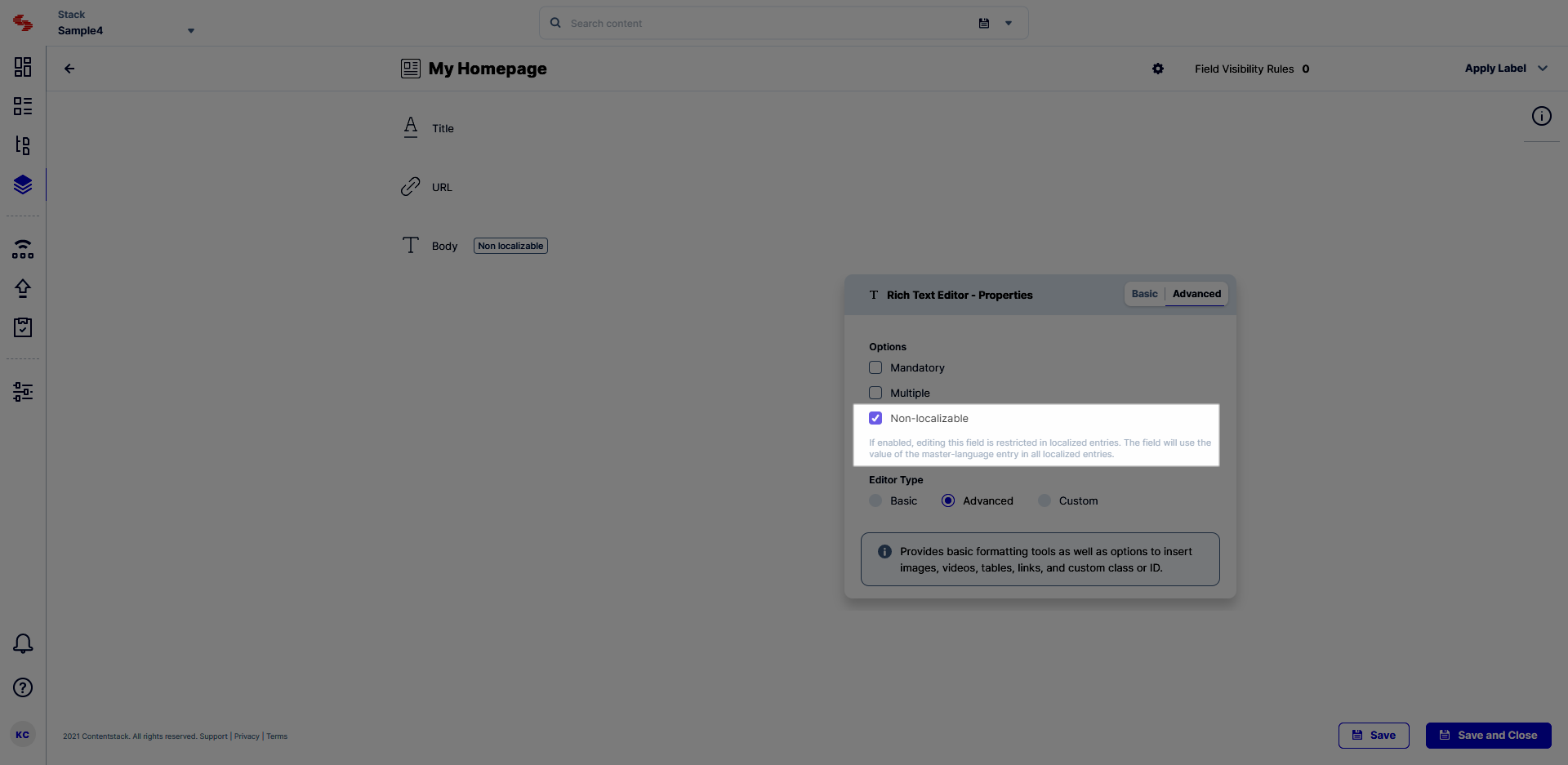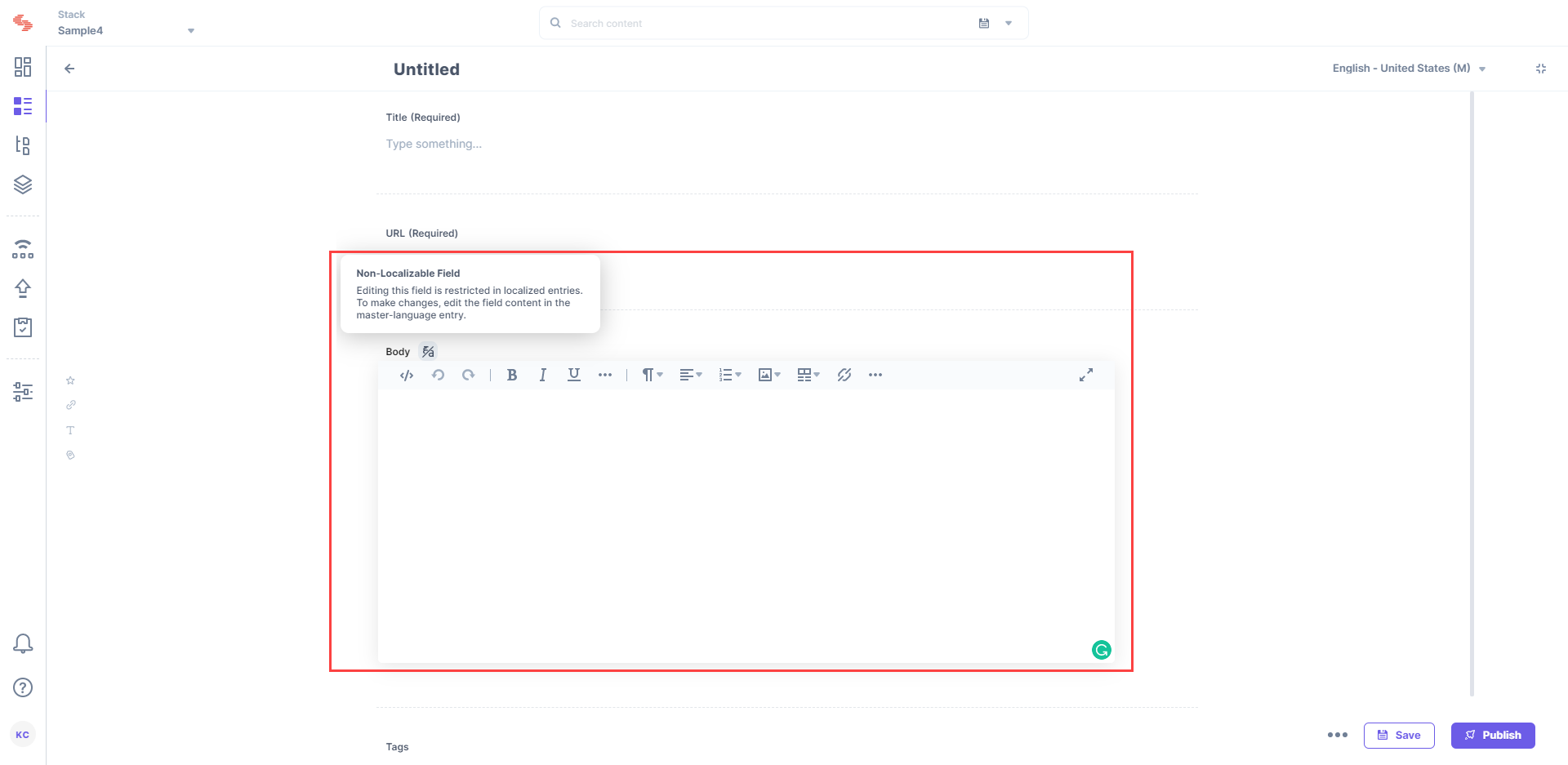Was this article helpful?
Thanks for your feedback
Contentstack provides the option to mark any field of your content type as ‘Non-localizable’. This feature is useful for cases where you do not want content managers to translate the value of a field for localized entries. An example of this is a URL field which should remain the same in all localized entries or an image that is common for all localized entries.
When you mark a field as ‘Non-localizable’, you can add data to that field only in the master language entry. The field cannot be edited (or translated) in the localized versions of the entry.
Note: Editing the data of a ‘Non-localizable’ field in the master-language entry will automatically update the field data in all the localized versions of the entry and the version number of the localized entries will increment by 1.
If the Non-localizable option is enabled for a field, it restricts editing (or translation) of that field in localized entries. Non-localizable fields can be edited only through the master-language entry, and its value is reflected in the localized entries.
To mark a field as ‘Non-localizable’, follow the steps given below:

Once you do this, open the entry in the master language. Enter the data for all the fields, including the “Non-localizable” field. Save the entry.
Now, select a language using the language selector located on the top of the page. This will open the unlocalized copy of the entry. You will find that the “Non-localizable” field has been disabled.

Before using the ‘non-localiable field’ feature, it’s important to understand it completely, and learn how it works in different scenarios.
Case 1: If you edit an existing content type (which has localized entries), and you mark a field as non-localizable, then:
Case 2: If a field of an existing content type is already marked non-localizable, but is later changed to localizable, then:
Case 3: If a field is marked as 'Non-localizable' and you delete all languages except the master language from your stack, then:
Was this article helpful?
Thanks for your feedback